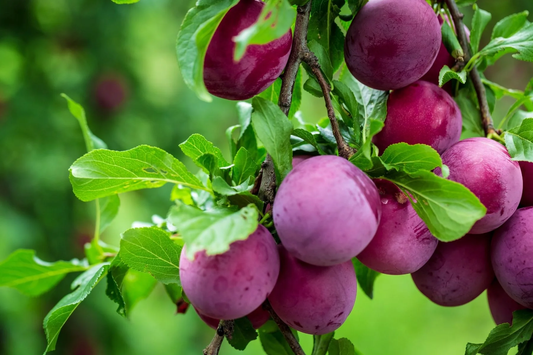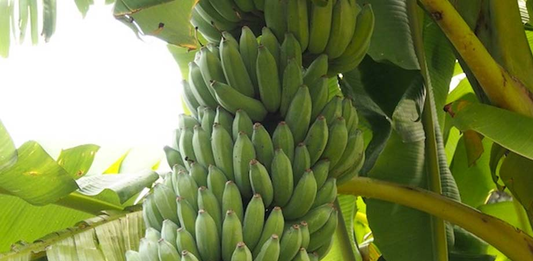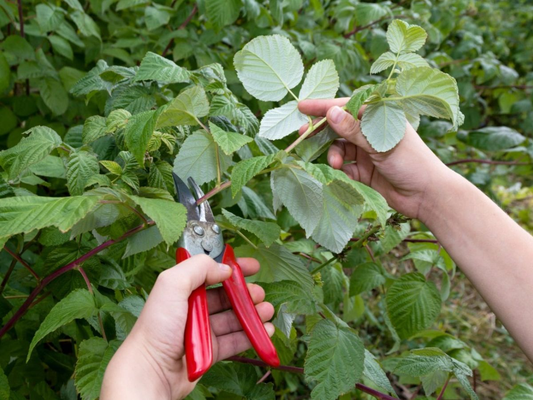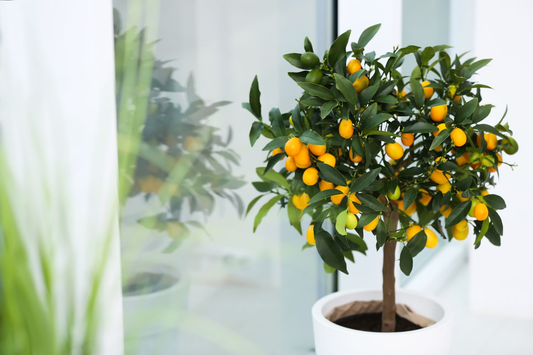The Best Soil for Houseplants: Secrets for Vibrant Indoor Gardens
Share
Table of Contents
1. Introduction: Why Soil Matters for Houseplants
When it comes to indoor gardening, one of the most crucial factors that determine the success of your houseplants is the type of soil they are planted in. Soil plays a significant role in providing plants with the necessary nutrients, water, and oxygen, which directly affects their growth, health, and vibrancy. Choosing the right soil for your indoor plants is not only essential for promoting their well-being but also for enhancing the beauty and longevity of your greenery. Let's explore why soil matters so much for houseplants.
Soil is more than just a medium to hold a plant's roots in place. It has a direct impact on several factors that contribute to the plant's vitality:
- Provides Nutrients: Soil is packed with essential nutrients that plants need to grow, such as nitrogen, phosphorus, and potassium. These nutrients are absorbed through the roots and help with photosynthesis, blooming, and overall health.
- Promotes Root Health: The right soil helps roots develop properly, ensuring they have adequate space to grow and spread. Good soil structure allows roots to expand and access oxygen, which is critical for their survival.
- Improves Drainage: Proper drainage is essential to prevent overwatering. Soils with the right balance of components, such as perlite or sand, allow excess water to flow through while retaining just enough moisture for the plants.
- Supports Aeration: Aeration in soil allows oxygen to reach the plant's roots. This is vital because roots need oxygen to breathe and perform metabolic processes that support growth.
- Helps Retain Moisture: The right mix of soil ingredients retains moisture without becoming waterlogged, providing your plants with consistent hydration.

2. Understanding Houseplant Soil Basics
Understanding the basics of houseplant soil is key to selecting the best mix for your indoor plants. Unlike garden soil, which is primarily used for outdoor plants, houseplant soil is specially formulated to meet the unique needs of indoor plants. Houseplant soil must be lightweight, well-draining, and able to retain moisture without becoming waterlogged. It also needs to offer sufficient aeration to allow the plant roots to breathe.
What Is Houseplant Soil?
Houseplant soil is a specially blended mix designed for indoor plants. It is typically lighter and finer than outdoor garden soil, which can be too heavy and dense for indoor plant roots. In addition, houseplant soil often includes additives to improve drainage and moisture retention, ensuring that plants have the right balance of both water and air for optimal growth.
Components of Houseplant Soil:
Houseplant soil is made up of several key components that work together to create the ideal environment for plants. The most common ingredients include:
- Potting Mix: This is the base of houseplant soil, often made from a blend of organic matter like compost or bark. It provides a neutral foundation for plant roots to establish themselves.
- Peat Moss: Known for its water-retention properties, peat moss helps keep soil moist without becoming overly saturated. It also adds acidity to the soil, which some plants prefer.
- Perlite: A lightweight volcanic material, perlite improves aeration and drainage, preventing the soil from becoming compacted and ensuring that excess water flows out easily.
- Vermiculite: This mineral absorbs moisture and nutrients, gradually releasing them to the roots. It also helps to keep the soil structure light and fluffy.
- Coconut Coir: A sustainable alternative to peat moss, coconut coir helps retain moisture and nutrients while improving soil structure.
Why Good Drainage, Aeration, and Water Retention Matter:
For indoor plants, having the right balance of these properties is crucial:
- Drainage: Proper drainage prevents root rot by allowing excess water to escape the soil, ensuring that the plant roots don’t sit in standing water.
- Aeration: Aeration ensures that oxygen can reach the roots, which is vital for healthy root development and plant metabolism.
- Water Retention: Water retention keeps the soil moist enough to meet the plant’s hydration needs but not so much that it becomes waterlogged.
3. Different Types of Soil for Houseplants
Choosing the right type of soil for your houseplants is crucial for their success. Different plants have different soil requirements based on their specific needs. Below, we will explore various types of soil mixes designed for specific plant types, along with their advantages and disadvantages.
1. General-purpose Potting Mix:
General-purpose potting mix is a versatile choice suitable for a wide range of houseplants, including succulents, ferns, and tropical plants. This soil is designed to provide a balanced environment for most indoor plants, offering adequate drainage and moisture retention.
2. Cactus and Succulent Soil:
Cactus and succulent soil is specifically formulated for plants that require excellent drainage and dry conditions. This soil is ideal for drought-tolerant plants like cacti, succulents, and aloe vera. It contains materials like sand and perlite to ensure fast drainage and prevent water retention.
3. Orchid Mix:
Orchid mix is designed to accommodate orchids' unique root structure. It typically contains larger chunks of bark, coconut husk, and other materials that allow air to circulate around the roots. Orchids need well-drained, airy soil to avoid root rot and encourage healthy growth.
4. African Violet Soil:
African violet soil is perfect for these delicate and moisture-loving plants. This soil is often lighter, well-draining, and retains moisture well, making it ideal for African violets and other plants with similar care requirements.
5. Citrus and Vegetable Soil:
Citrus and vegetable soil is enriched with additional nutrients to support fruiting houseplants, such as citrus trees, tomatoes, and peppers. This mix contains a higher concentration of fertilizers to promote fruiting and flowering, while still maintaining good drainage.
Comparison Table: Different Types of Soil for Houseplants
| Soil Type | Ideal For | Pros | Cons |
|---|---|---|---|
| General-purpose mix | Most indoor plants | Balanced for growth | May not drain well for some plants |
| Cactus and succulent | Cacti and succulents | Excellent drainage, lightweight | Needs regular re-potting |
| Orchid mix | Orchids | Great air circulation for roots | Too coarse for some plants |
| African violet mix | African violets | Moisture retention | Can be too heavy for roots |
| Citrus/vegetable mix | Fruiting plants, citrus trees | Nutrient-rich | May be too dense for small pots |
In conclusion, selecting the right type of soil for your houseplants can make a huge difference in their overall health and growth. By choosing the correct soil mix tailored to your plant's needs, you'll create the ideal environment for them to thrive.

4. Key Ingredients to Look for in the Best Soil for Houseplants
When choosing the best soil for houseplants, it's essential to understand the key ingredients that make up a quality potting mix. These ingredients help provide the right balance of moisture retention, drainage, aeration, and nutrients. Let's take a look at some of the most common and beneficial soil components:
1. Peat Moss:
Peat moss is one of the most common ingredients found in houseplant soil. Known for its excellent water retention properties, peat moss helps keep the soil moist for longer periods, which is beneficial for plants that prefer consistently moist conditions. However, it's important to be aware of environmental concerns regarding peat moss. Its harvesting can be damaging to peat bogs, which play a crucial role in carbon sequestration. As a result, some gardeners prefer alternatives like coconut coir, which can offer similar benefits with less environmental impact.
2. Perlite:
Perlite is a lightweight, volcanic material that is added to soil mixes to improve drainage and aeration. It helps prevent soil compaction and allows excess water to escape quickly, which is vital for preventing root rot. Perlite also helps keep the soil light and fluffy, making it easier for plant roots to grow and access air. Its white, pebble-like appearance makes it easy to spot in potting soil, and it’s especially useful for plants that need a well-drained soil mix, such as succulents and cacti.
3. Vermiculite:
Vermiculite is another mineral that enhances the soil’s moisture retention. It absorbs and holds water, releasing it gradually to plant roots. In addition to moisture retention, vermiculite also provides essential minerals such as magnesium, potassium, and calcium, which are beneficial for plant growth. Vermiculite is often included in soil mixes designed for moisture-loving plants, as it helps keep the soil consistently moist without becoming waterlogged.
4. Coconut Coir:
Coconut coir is an eco-friendly alternative to peat moss. Made from the husks of coconuts, coir has similar water retention properties but is more sustainable. Coir holds water efficiently while still allowing for proper aeration, making it an ideal component for soil mixes. It’s also a renewable resource, unlike peat moss, which can take thousands of years to regenerate. For those looking to reduce their environmental impact, coconut coir is an excellent choice.
5. Compost:
Compost is a natural, organic material that adds essential nutrients to the soil. Adding compost to houseplant soil provides a rich source of organic matter, which improves soil structure, enhances water retention, and boosts soil fertility. Compost also introduces beneficial microbes to the soil, which can help break down organic matter and improve plant health. When included in houseplant soil, compost provides slow-release nutrients that support plant growth over time.

5. Choosing the Right Soil for Your Houseplant Species
Different houseplants have varying soil requirements based on their natural habitats and growth preferences. Understanding these needs is crucial for ensuring your plants thrive. In this section, we’ll break down the ideal soil mixes for several plant categories, including low-light plants, high-light plants, moisture-loving plants, and tropical plants.
1. Low-light Plants:
Plants like snake plants and pothos are often referred to as "low-light" plants, as they can thrive in areas with minimal natural light. These plants typically don't need a heavy, moisture-retentive soil mix. A general-purpose potting mix with added perlite or sand for improved drainage works well for these types of plants. Low-light plants tend to need soil that retains just enough moisture without staying overly wet. Excess moisture can lead to root rot, so a well-draining mix is essential. Consider mixing equal parts of potting mix, perlite, and a small amount of sand for the best balance of moisture retention and drainage.
2. High-light Plants:
High-light plants, such as cacti, succulents, and herbs, require a soil mix that promotes rapid drainage and doesn’t hold excess water, as they are adapted to dry, arid environments. For these plants, it’s crucial to use a potting mix designed for cacti and succulents. These mixes are typically composed of a combination of sand, perlite, and sometimes small pieces of bark to ensure quick drainage and aeration. When planting high-light plants, make sure the soil is light, fast-draining, and doesn’t retain moisture for too long. You can even add extra perlite or pumice to increase drainage if needed. Succulents also benefit from soil that is slightly acidic to neutral, so check your soil mix's pH level for optimal growth.
3. Moisture-loving Plants:
Plants like ferns, calatheas, and peace lilies thrive in humid environments where moisture is consistently present. For these moisture-loving plants, it’s essential to use a soil mix that retains moisture but also allows for adequate drainage to prevent waterlogging. A high-quality, well-draining potting mix enriched with organic matter like peat moss or coconut coir is ideal. Additionally, adding vermiculite can help retain moisture without suffocating the roots. The key is to keep the soil evenly moist but not soggy. These plants also benefit from soil that is slightly acidic, which can be provided by adding peat moss or compost. A typical mix for moisture-loving plants might consist of equal parts potting soil, vermiculite, and peat moss.
4. Tropical Plants:
Tropical plants like monstera, philodendron, and anthurium need a soil mix that replicates the rich, well-draining, yet moisture-retentive soils of their native environments. For these plants, it's best to choose a potting mix that has a high organic matter content, such as a blend of peat moss, compost, and perlite. Tropical plants generally prefer soil that retains moisture but also drains well, preventing roots from becoming waterlogged. To increase air circulation around the roots, you can add orchid bark or coconut coir to your mix. This will provide the necessary balance of moisture retention, drainage, and root aeration that tropical plants require.
Soil Recommendations Based on Plant Types:
- Low-light plants (e.g., snake plants, pothos): General-purpose potting mix with added perlite or sand.
- High-light plants (e.g., cacti, succulents, herbs): Cactus and succulent mix with extra perlite for enhanced drainage.
- Moisture-loving plants (e.g., ferns, calatheas, peace lilies): Moisture-retentive mix with peat moss, vermiculite, and compost.
- Tropical plants (e.g., monstera, philodendron): Well-draining mix with organic matter like peat moss, compost, and perlite, plus orchid bark for aeration.

6. How to Prepare Your Own Soil Mix
Creating your own custom potting mix is a rewarding way to ensure your houseplants get exactly what they need. With a few basic ingredients, you can make soil blends that cater to specific plant types, ensuring healthy growth and vitality. This section provides a step-by-step guide to help you prepare your own soil mix, along with tips for adjusting it to suit different plant needs.
1. Step-by-Step Guide to Creating Custom Potting Mixes:
- Gather Your Ingredients: The basic components for most houseplant soil mixes are potting soil, perlite (or sand), coconut coir (or peat moss), and optionally, vermiculite or compost.
- Measure the Ingredients: Using a measuring cup or scoop, measure the ingredients based on the desired soil mix ratio. For example, a general-purpose mix might use 3 parts potting soil, 1 part perlite, and 1 part coconut coir.
- Mix Thoroughly: In a large container or wheelbarrow, combine the ingredients thoroughly, ensuring that each component is evenly distributed throughout the mix. Stir well to avoid clumping or uneven distribution.
- Check the Texture: After mixing, test the texture of the soil. It should be light and fluffy, with good aeration. If it feels too dense, add more perlite or sand to increase drainage. If it feels too loose, add a little more coconut coir or peat moss to improve moisture retention.
- Test Drainage: To ensure the mix drains properly, moisten a small amount of the soil and check if water drains through it quickly. If water sits on top or doesn’t drain well, adjust the mix by adding more perlite or coarse sand.
2. Recommended Ratios for Mixing Different Ingredients:
Here are some basic ratios for common soil mixes:
- General-purpose mix (ideal for most houseplants): 3 parts potting soil, 1 part perlite, 1 part coconut coir.
- Cactus and succulent mix: 2 parts potting soil, 2 parts perlite or coarse sand, 1 part coconut coir.
- Moisture-retentive mix (for ferns and peace lilies): 2 parts potting soil, 1 part peat moss, 1 part perlite, 1 part vermiculite.
- Tropical plant mix (for monstera or philodendron): 3 parts potting soil, 1 part coconut coir, 1 part perlite, 1 part orchid bark.
3. Benefits of Creating Your Own Soil Mix:
Making your own potting mix allows you to customize the soil to meet the unique needs of your plants. Here are some of the benefits:
- Cost-effectiveness: Buying individual ingredients in bulk can be cheaper than purchasing pre-made mixes.
- Customization: You have full control over the ratios, ensuring the soil suits your specific plant needs.
- Freshness: Pre-made mixes can sometimes sit on shelves for months, losing their efficacy. Freshly mixed soil provides better aeration and nutrient content.
4. Tips on Adjusting Soil for Drainage or Moisture Retention:
- For better drainage: Add more perlite, sand, or pumice to your mix. These materials help water flow through quickly and prevent soil from becoming soggy.
- For improved moisture retention: Incorporate more coconut coir, peat moss, or vermiculite to help hold water in the soil for longer periods, ideal for moisture-loving plants.
- For aeration: Mix in orchid bark or coarse sand to create more air pockets, promoting healthier root development and preventing compaction.
7. Signs Your Soil Needs Attention
Just like plants need water and light, they also need the right soil to thrive. Over time, soil can become compacted, dry, or nutrient-depleted, all of which can affect your plants' health. Knowing the signs that your soil needs attention is crucial to keeping your houseplants happy and healthy. This section will help you identify common soil problems and provide solutions for refreshing or replacing it.
1. How to Identify If Your Soil Is Too Compacted, Dry, or Lacks Nutrients:
- Compacted soil: When soil becomes compacted, it restricts root growth and water drainage. Symptoms include slow plant growth, yellowing leaves, and roots that seem to be stunted or rotting. The soil may feel hard and dense when touched.
- Dry soil: Dry soil can be identified by plants that wilt even after watering or by soil that feels completely dry to the touch. The soil may pull away from the sides of the pot, leaving gaps between the soil and the container.
- Lack of nutrients: Plants in nutrient-depleted soil may show signs of yellowing leaves, weak growth, or poor flowering. Leaves might drop prematurely, and the plant could look generally unhealthy, even with proper watering.
2. Symptoms of Overwatering or Underwatering Due to Poor Soil:
- Overwatering: If the soil retains too much water due to poor drainage, your plant may develop root rot. Symptoms include yellowing leaves, wilting despite moist soil, and a musty smell from the soil.
- Underwatering: Soil that dries out too quickly can result in dehydration. The leaves may turn brown or crispy, especially around the edges, and the plant will often show signs of wilting.
3. How to Refresh or Replace Soil to Improve Plant Health:
- Refresh your soil: Gently loosen compacted soil by removing the plant, breaking up the soil with your hands, and adding fresh potting mix. You can also incorporate perlite or coconut coir to improve aeration and drainage.
- Replace old soil: If the soil is too far gone—dry, compacted, or depleted of nutrients—consider repotting your plant into fresh soil. Choose a mix suited to your plant's specific needs, and ensure that the new soil is well-draining and nutrient-rich.
8. Repotting and Soil Replacement Tips
Repotting your houseplants is an essential part of maintaining their health and promoting growth. Over time, plants outgrow their pots or the soil becomes depleted, which can negatively affect their development. In this section, we’ll guide you through the repotting process and explain why it’s important for your plants.
1. When and How to Repot Your Houseplants:
- Signs your plant needs repotting: If your plant has outgrown its pot (roots visible through drainage holes), the soil dries out too quickly, or the plant seems to have stopped growing, it’s time to repot. Typically, this should be done every 1-2 years, depending on the growth rate of your plant.
- Choosing the right pot: Select a pot that is 1-2 inches larger in diameter than the current one. Ensure it has drainage holes to avoid waterlogging the roots.
- Repotting steps: Gently remove the plant from its pot by tipping it sideways, supporting the base. Loosen the roots carefully if they are tangled, and remove any old, compacted soil. Place the plant in the new pot and fill the sides with fresh soil. Water thoroughly after repotting.
2. How to Properly Remove Old Soil and Replace It with Fresh Soil:
- Removing old soil: When repotting, it’s important to remove as much of the old soil as possible to prevent it from compacting or draining poorly. You can gently shake the plant and its root ball to remove excess soil.
- Replacing with fresh soil: After cleaning the roots, fill the new pot with fresh potting mix that suits your plant’s needs. Make sure the soil is lightly packed around the roots to ensure proper aeration and drainage.
3. Why Repotting Is Essential for Plant Growth and Health:
- Promotes healthy root growth: Repotting provides more space for the roots to grow, allowing the plant to develop a stronger root system.
- Prevents nutrient depletion: Over time, old soil loses nutrients, and repotting replenishes the soil, ensuring your plant continues to receive adequate nutrition.
- Improves drainage and aeration: Fresh soil improves drainage and aeration, reducing the risk of root rot and allowing the plant to absorb water and nutrients efficiently.

9. Common Mistakes When Choosing Soil for Houseplants
Choosing the right soil for your houseplants is essential for their health, but there are some common mistakes that can lead to poor plant growth or even plant death. In this section, we’ll highlight the most frequent soil-related mistakes and provide tips on how to avoid them.
1. Over-Watering Due to Dense Soil:
- Problem: Dense soil, such as heavy clay-based mixes, can retain too much moisture, leading to overwatering. This can cause root rot and other issues related to excessive moisture.
- Solution: Choose soil mixes with good drainage, such as potting soil with perlite or a cactus mix for plants that require dry conditions. Ensure that your pots have drainage holes to allow excess water to escape.
2. Choosing a Mix with Poor Drainage for Certain Plants:
- Problem: Some houseplants, like succulents and cacti, require a well-draining soil mix, while others, like ferns and peace lilies, prefer moisture-retentive soil. Choosing the wrong mix can lead to poor plant health.
- Solution: Always choose soil that matches your plant’s specific needs. For example, cactus and succulent soil mixes contain more sand and perlite for fast drainage, while soil for moisture-loving plants often contains peat moss or coconut coir.
3. Ignoring Plant-Specific Soil Needs:
- Problem: Not all plants have the same soil requirements. Some require acidic soil, while others need a more alkaline environment. Ignoring these requirements can stunt growth or cause yellowing leaves.
- Solution: Research your plant species before selecting a soil mix. For example, African violets thrive in a mix that retains moisture but drains well, while orchids need a mix with excellent air circulation around their roots.
4. Tips for Avoiding These Mistakes and Ensuring Healthy Plant Growth:
- Always read the label when buying pre-made mixes to ensure it suits your plant's needs.
- Consider making your own soil mix to have more control over drainage and moisture retention.
- Repot your plants regularly to ensure the soil doesn’t become compacted or nutrient-depleted.
10. Frequently Asked Questions (FAQ)
1. Can I use garden soil for houseplants?
- Why garden soil is not ideal for indoor plants: Garden soil is typically too heavy, can harbor pests, and may not provide the proper drainage that houseplants need. It also lacks the right structure for container gardening.
- What to use instead: Use a high-quality potting mix that is designed for houseplants. These mixes provide better aeration, drainage, and nutrient content, which is essential for indoor growth.
2. How often should I replace the soil in my houseplants?
- Recommended time frames: Soil replacement depends on the type of plant, but a general guideline is to replace the soil every 1-2 years. For fast-growing plants or those in small containers, you might need to replace the soil more frequently. Always check the soil's condition and adjust based on the plant's growth stage.
3. What type of soil is best for houseplants that don't need a lot of water?
- Soil recommendations for drought-tolerant plants: For succulents, cacti, and other drought-tolerant plants, a well-draining mix is key. Look for soil that contains sand, perlite, or pumice to ensure good drainage and avoid water retention.
4. Can I make my own soil mix for houseplants?
- Steps for creating your own potting soil mix: Yes! A simple recipe includes 3 parts potting soil, 1 part perlite or sand for drainage, and 1 part coconut coir or peat moss for moisture retention. Adjust based on plant type for optimal results.
5. What happens if I use the wrong soil for my houseplants?
- Common issues caused by improper soil: Using the wrong soil can lead to poor drainage, root rot, nutrient deficiencies, and stunted growth. Always select soil that matches your plant’s specific needs to avoid these issues.
6. How can I tell if my soil is too compacted for my plants?
- Signs of soil compaction: If water runs off the surface without soaking in or if the plant's growth has slowed, the soil may be too compacted. You can correct this by loosening the soil with a small fork or repotting with fresh, well-draining soil.
Additional Resources
How to Buy Rare Plant Seeds Online and Start Your Dream Garden – XRoci
How to Create an Indoor Garden: Fresh Ideas for Every Home – XRoci
How to Grow Asparagus from Seeds and Enjoy Fresh Harvests – XRoci




